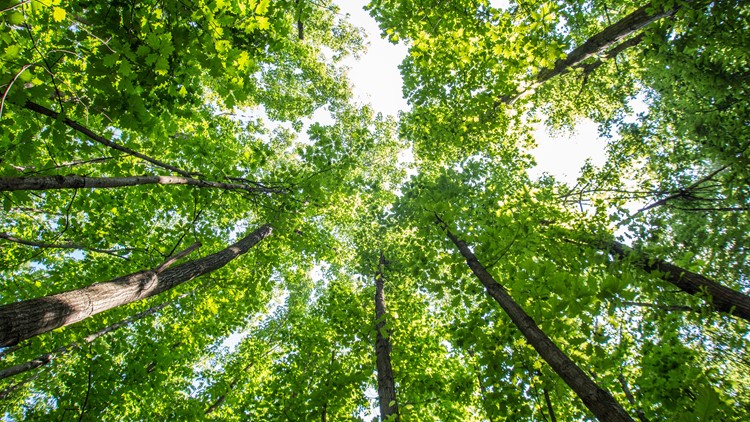SEATTLE — The city of Seattle lost 225 acres of tree canopy cover between 2016 and 2021, an amount roughly the size of Green Lake.
This information was found in a study conducted by the city's Office of Sustainability and Environment and Urban Forestry Commission.
Seattle’s tree canopy includes trees in public spaces like parks and natural areas; private lands like neighborhoods and residential homes; and spaces like universities and the Arboretum.
Canopy cover assessment findings
In addition to the total loss of tree canopy found, the assessment found other developments related to equity and climate change.
There is a 1.7% overall decline in the city's tree canopy that causes severe loss in some neighborhoods more than others. These findings confirm inequities in tree canopy communities that are already experiencing disproportionate climate, health, and economic impacts.
There is a high correlation shown between areas of low canopy cover and areas of health inequities, lower air quality and higher heat indexes, including parts of Beacon Hill, Georgetown and South Park.
The study also showed that trees in natural areas and parks are experiencing the most strain from the effects of climate change. Due to a hotter climate, the trees are faced with more insect and pest outbreaks, droughts and flooding events.
Reasons for the tree canopy cover loss
Every area faces different challenges, which makes exact reasons complex. Here are some key factors at play:
- Hotter and drier summers
- Large construction projects for utilities, transportation and other infrastructure
- Substantial housing growth
- Aging trees are more susceptible to extreme weather conditions and pest infestations
Importance of tree canopy cover
The tree canopy loss between 2016 through 2021 resulted in hundreds of thousands of pounds of CO2, millions of gallons of stormwater runoff not avoided, hundreds of acres of shade lost and hundreds of thousands of pounds of pollutants not absorbed.
Trees aid in multiple aspects of health and climate. They improve air quality and physical and mental health.
Healthy trees help with heat mitigation and cooling the air around them. They also aid in biodiversity and pest resistance.
More trees can even reduce health disparities when placed in areas with less tree canopy cover. Trees cool neighborhoods, which reduces heat-related illnesses and utility costs.
City of Seattle's next steps
Seattle's goal is to achieve 30% canopy cover by 2037. While the findings in this assessment are not a step in that direction, Seattle Mayor Bruce Harrell said the information is still valuable.
"This data presents the information and opportunity we need to re-evaluate, and course correct, so that the city’s strategies reflect my administration’s commitment to support healthy communities, improve air quality and create neighborhoods resilient to the impacts of climate change," Harrell said.
The city plans to protect and maintain the current tree canopy, plant new trees, empower residents and business owners to care for trees on their land and plan tree planting opportunities with local schools and community organizations.
The city will also pursue local, state and federal funding for planting and in-depth assessments.



